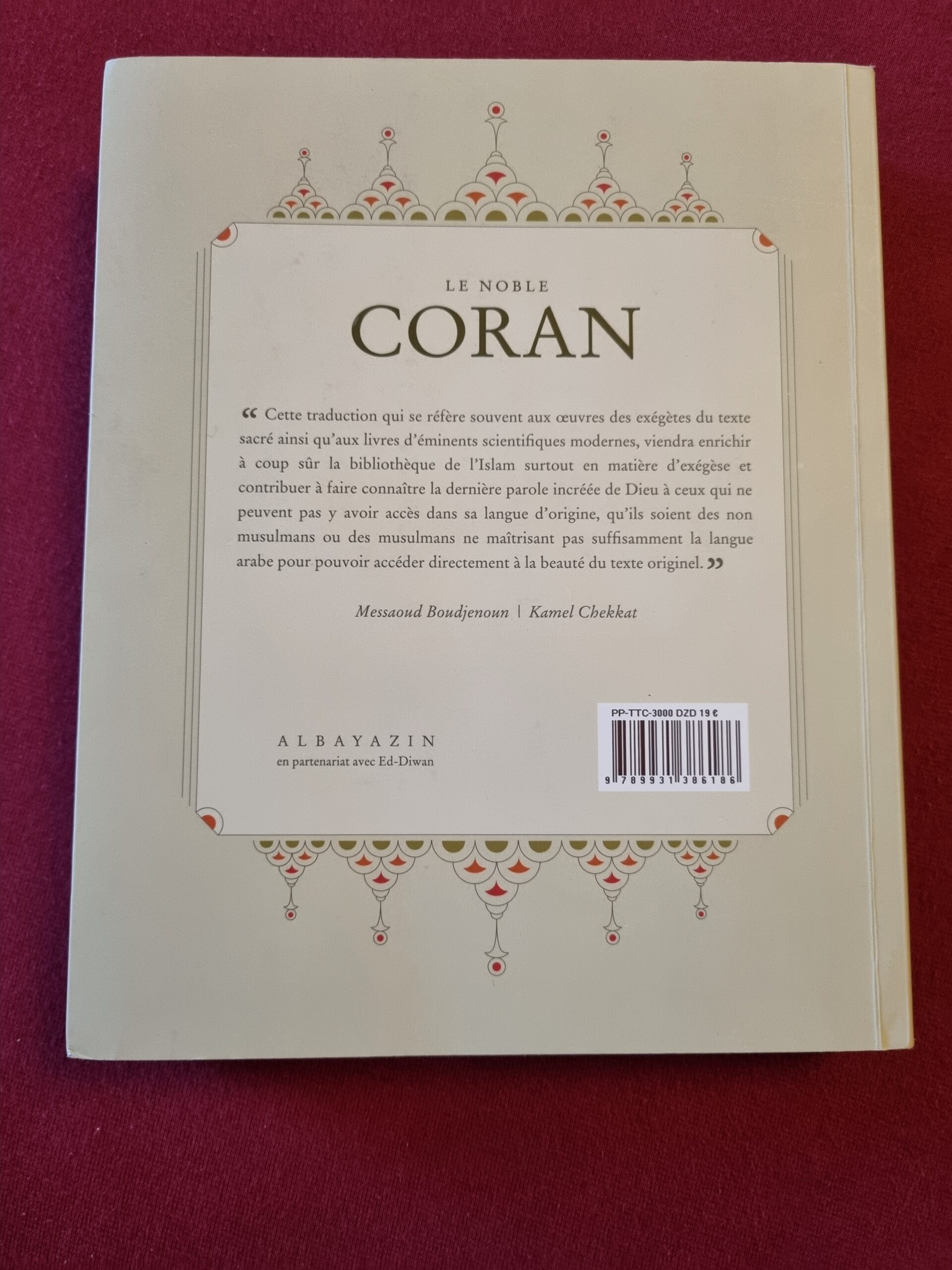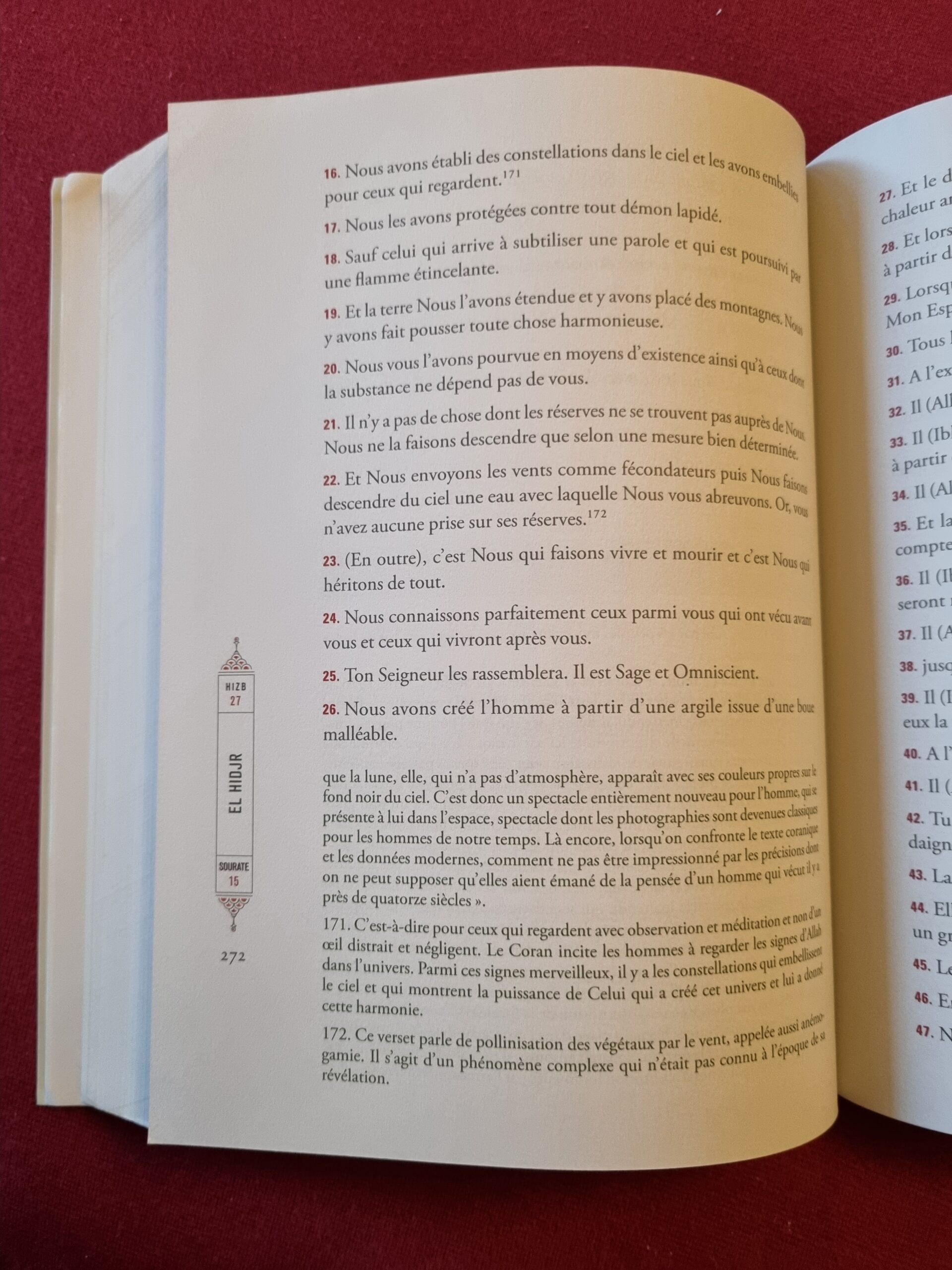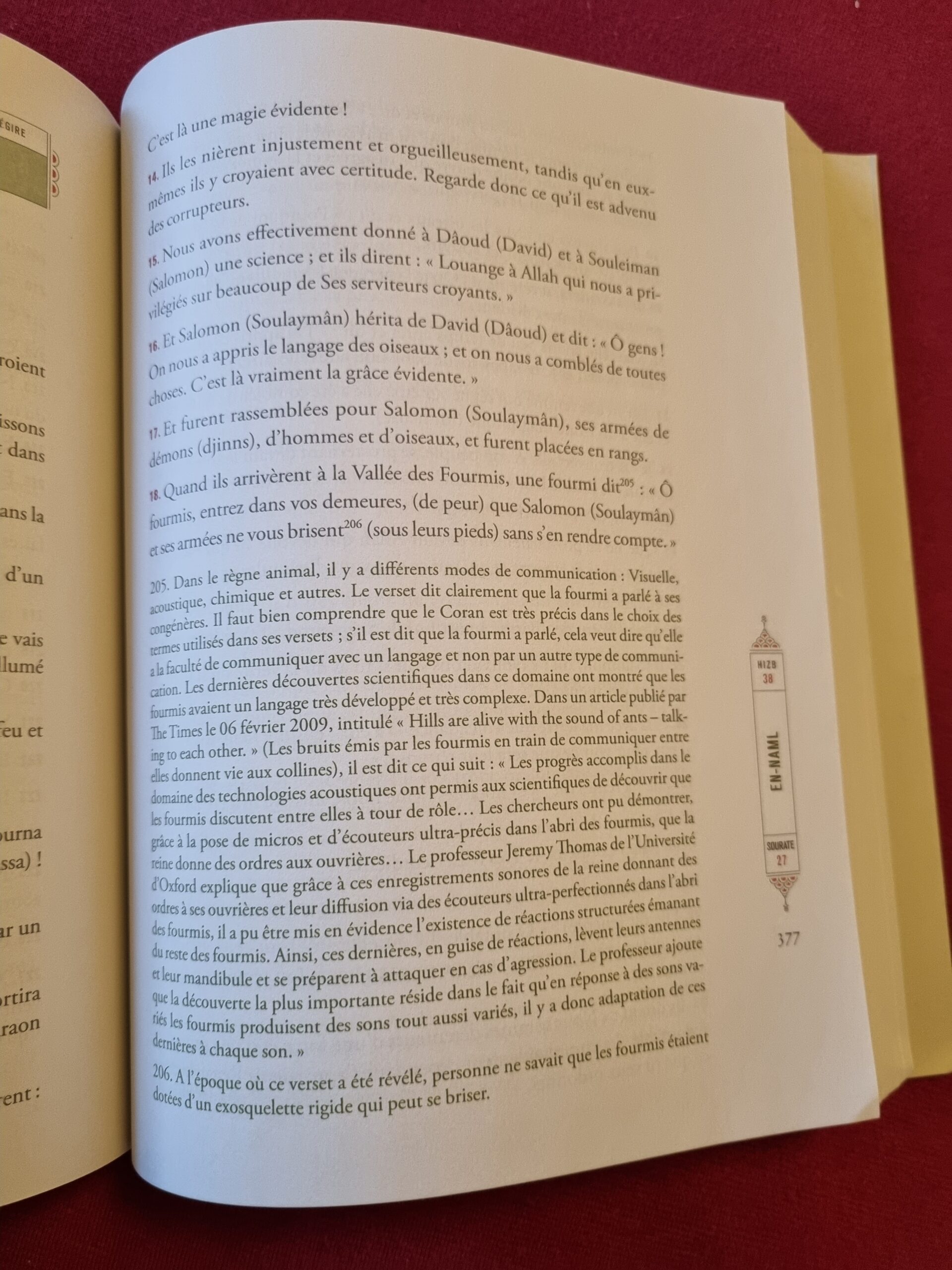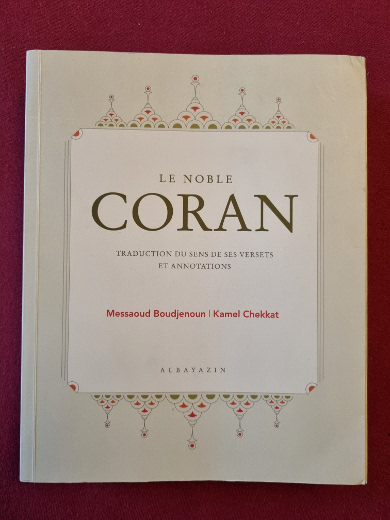The most recent French Qur’an translation, published in 2022, is also the first to be published in Algeria since the country became independent from France in 1962, or actually since the publication of the very first French Qur’an translation undertaken by Muslim authors, which appeared in 1931. This is probably at least partly due to the fact that Algeria’s language policy after independence was very much focused on the Arabic language, with a more recent revival of Tamazight, which meant that French Qur’an translations by Muslims with an Algerian background, such as that by Hamza Boubakeur, were published in France, or maybe by missionary publishers in Riyadh or Istanbul, but not in Algeria.
The Algiers-based publisher Albayazin has changed this. Their portfolio mostly comprises French books about Algeria’s tourist sites, but they have also published a small number of translations of religious texts, the third and most recent one being Le Noble Coran: Traduction du sens de ses versets et annotation (‘The Noble Qur’an: Translation of the Meaning of its Verses with Annotation’) by Messaoud Boudjenoun and Kamel Chekkat. Both translators are associated with the High Islamic Council in Algiers. Chekkat (b. 1967) is a religious scholar with a specialisation in law, a member of the Association of Muslim Ulemas of Algeria, and the host of various French-language religious radio and TV programmes in Algeria. Boudjenoun (b. 1959) is a prolific author of religious works and translator of Islamic classics, including Ibn Kathīr’s tafsīr, into French.


The translation is a monolingual French work, clearly laid out and with a pleasant design. In their brief foreword the translators situate themselves in the history of Latin and French Qur’an translations and explain their contribution, saying that they wanted their translation to be simple and comprehensible but also to include a generous number of insertions and notes in order to clarify that which needs clarification. According to the translators, their primary aim is to enrich the field at the exegetical level, especially regarding
‘verses with a scientific connotation, of which there are a great number … that cover the creation of the universe as well as the portents of its end, gravity, the phases of the creation of humans, the determination of sex, the animal kingdom, the expansion of the universe, and the conquest of space, as well as numerous other scientific topics.’
True to their word, the translation is written in fluent, readable French with many exegetical insertions, which are usually marked by brackets. For example, Q 27:54 is rendered as follows:
‘Et Loth (Lot), quand il dit à son peuple: “Vous livrez-vous à la turpitude (L’homosexualité) alors que vous voyez (ses conséquences néfastest).”’
‘And Lot (Lut), when he said to his people: “You surrender yourselves to turpitude (homosexuality) so that you will see (the fatal consequences).”’
While the Qur’an nowhere explicitly mentions same-sex intercourse, the Qur’anic stories of Lot are conventionally understood to relate to this in their reference to ‘heinous acts’ (although some recent interpreters have argued against this reading), and the translators clearly want to leave no doubt in the minds of readers that this is what the verse means.
While insertions in brackets are used sparingly, footnotes provide additional and often much more extensive information. Sometimes this is taken from Qur’anic commentaries such as those by al-Ṭabarī and Ibn Kathīr; at other times, the translators give additional information such as biblical cross-references or legal details. A footnote provided on Q 4:34 is probably the longest of these, covering no less than nine pages that try to mitigate any potential discomfort over the translation of the verse, according to which men are in charge of women and husbands have the right to hit their wives, if only as a last resort.
The translators’ main area of interest, however, is science, as they have stated in their introduction. In this, they clearly follow in the footsteps of Maurice Bucaille (1920–1998), whom they repeatedly cite. Bucaille, in his book The Bible, the Qur’an and Science, argued that the Qur’an is fully compatible with modern science and contains many statements based on scientific knowledge that has only recently become available. Bucaillists maintain that this ‘scientific miracle’ proves that the Qur’an cannot have been written by a human from the seventh century CE but must be of divine origin.
Chekkat and Boudjenoun frequently include arguments based on this idea in their footnotes. For example, Q 57:25 contains the Arabic phrase wa-anzalnā l-ḥadīd which they translate as ‘Et nous avons fait descendre le fer’ (‘And we sent down iron’). The note on this segment says:
‘This verse reveals a scientific truth that has only recently been discovered, namely, that iron is of “extraterrestrial” or “meteoritic” origin, as was last indicated by Professor Albert Jambon, an expert of meteorites at the French Institute for Mineralogy, Material Physics and Cosmochemistry. This expert has analysed ancient objects that had been retrieved and came to the following conclusion: “Most of the objects analysed contain several percent of nickel, which demonstrates rather clearly their meteoritic origin.” The verse talks indeed of “coming down,” which is perfectly compatible with modern science.’
Similar notes on a wide variety of subjects are scattered throughout their translation, whether it is the language of ants, the fate of dying stars or the human ability to see colours. These notes often make reference to named scientists or publications and invariably try to demonstrate, first, the compatibility of Qur’anic statements with scientific knowledge, and second, the fact that this knowledge was not available at the time at which the Qur’an emerged. The translators are so concerned with this notion that they bring it up even in places where it does not seem to be entirely necessary or convincing.



For example, in Q 12:4, Joseph tells his father that he dreamed of eleven planets (kawkab), the sun and the moon. Since this is a dream, it would not be problematic per se if it did not conform to scientific standards, and indeed, the translators themselves point out that the currently known number of planets in the solar system is nine. As a matter of fact, since Pluto’s demotion to the status of ‘dwarf planet’ in 2006, it is only eight, but the source they cite from (Mohammed Yacine Kassab’s Gloire à Dieu: Les milles verités scientifiques du Coran) was not yet aware of that fact, nor were they. In any case, their somewhat vague argument goes on to say that numerous ‘dwarf planets’ have been discovered and the search for further planets is ongoing, a line of reasoning which is presumably meant to justify the number eleven mentioned in the verse. This lays them open to one of the main points of criticism directed at Bucaillism by its opponents: it makes the truthfulness of the Qur’an appear to be dependent on current scientific knowledge, which implies that whenever scientific insights change, the understanding of the Qur’an has to be adapted. This, according to critics, might actually increase doubts about the Qur’an’s veracity, rather than erase them.
Another common criticism of the Bucaillist approach is that it is so focused on the ‘scientific truth’ in the Qur’an that it often takes verses out of context, and this is visible in Chekkat’s and Boudjenoun’s translation as well. For example, Q 21 contains a long passage of polemic against the unbelieving opponents of the Prophet that includes the phrase a-fa-lā yarawnā annā naʾtī l-arḍa nanquṣuhā min aṭrāfihā a-fa-hum al-ghālibūn (Q 21:44), which is often translated along the lines of ‘Do they not see how we come to the (their) land, reducing it from its outermost borders; will it then be them who are the winners?’ However, the noun al-arḍ can mean not only ‘land’ but also ‘Earth,’ and it is for that reason that Chekkat and Boudjenoun understand the verse as denoting that the Earth is reduced at its extremities. They explain in a footnote that this refers to the fact that Earth is flattened at the poles, which was not known before the seventeenth century. Regardless of whether this translation is plausible, it seems to be rather out of place and unrelated to the passage as a whole and to the segments that come immediately before and after it, even within the same verse. It only makes sense if one takes an extremely atomistic perspective on the Qur’an.
Johanna Pink
I would like to thank the publisher for sending a free copy of the translation!
